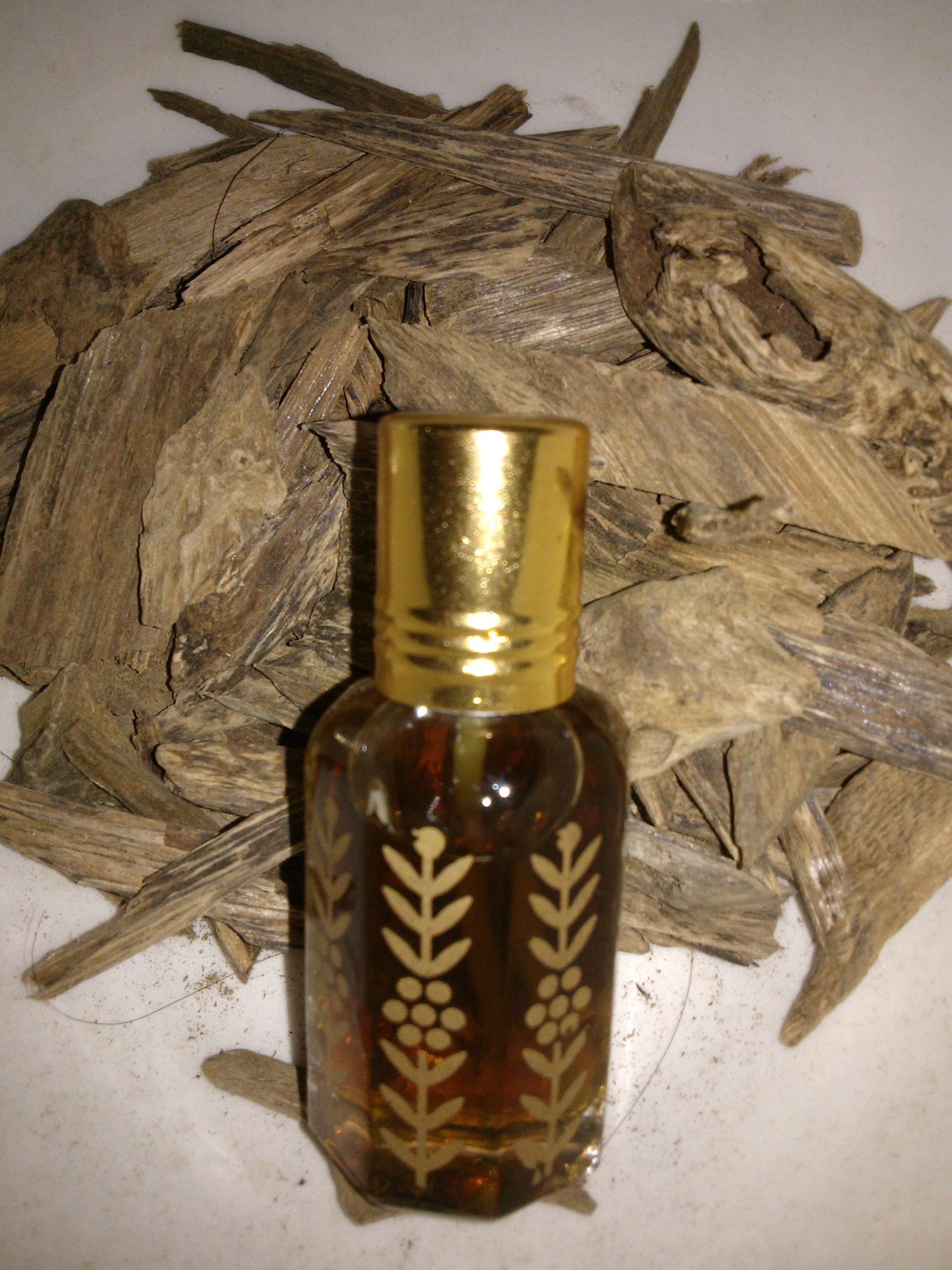Agarwood, also known as oud, oodh or agar, is a dark resinous heartwood that forms in Aquilaria and Gyrinops[1] trees (large evergreens native to southeast Asia) when they become infected with a type of mould. Prior to infection, the heartwood is relatively light and pale coloured; however, as the infection progresses, the tree produces a dark aromatic resin in response to the attack, which results in a very dense, dark, resin embedded heartwood. The resin embedded wood is commonly called gaharu, jinko, aloeswood, agarwood, or oud (not to be confused with 'Bakhoor') and is valued in many cultures for its distinctive fragrance, and thus is used for incense and perfumes.
Uninfected Aquilaria wood lacking the dark resin.
One of the main reasons for the relative rarity and high cost of agarwood is the depletion of the wild resource.[2] Since 1995 Aquilaria malaccensis, the primary source, has been listed in Appendix II (potentially threatened species) by the Convention on International Trade in Endangered Species of Wild Fauna and Flora.[3] In 2004 all Aquilaria species were listed in Appendix II; however, a number of countries have outstanding reservations regarding that listing.[3]
First-grade agarwood is one of the most expensive natural raw materials in the world. A whole range of qualities and products are on the market, varying in quality with geographical location and cultural deposition. Oud oil is distilled from agarwood, it fetches high prices depending on the oil's purity. The current global market for agarwood is estimated to be in the range of US$ 6 – 8 billion and is growing rapidly.[4]
http://en.wikipedia.org/wiki/Agarwood
